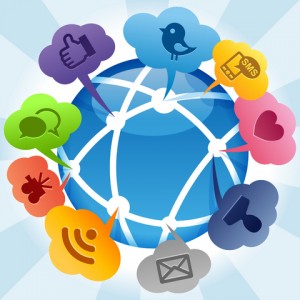 Smart marketers understand that 20th century marketing is less effective with every passing year. TiVo enables TV watchers to skip the commercials. Newspaper circulation has shrunk. Even web users have learned to tune out the ads.
Smart marketers understand that 20th century marketing is less effective with every passing year. TiVo enables TV watchers to skip the commercials. Newspaper circulation has shrunk. Even web users have learned to tune out the ads.
That’s why, in the 21st century, content marketing is almost essential. Think of it this way. What is marketing? It’s the art of understanding exactly what your customers want and delivering it to them in a way that exists to grow your business. Relevant and unique content is one of the best ways to achieve this purpose.
Content marketing is a way of creating and distributing valuable content to attract new and repeat business. It’s also a great way to engage and communicate with your target audience.
Content marketing is not exactly a new concept. (Newsletters, for instance, have been around for decades.) However, it is quickly gaining momentum as technology continues to evolve and grow. With the lackluster economy of the past few years, many companies have seen their advertising budgets slashed. To survive and thrive, businesses are getting more creative in order to make their advertising dollars stretch farther.
Some of the best content marketing “tools” today are as follows:
- Blogs
- Articles
- Case Studies
- Custom print magazines
- Custom e-magazines
- Email newsletters
- Mobile Applications or “Apps”
- Podcasts
- Videos (How-to-Videos, YouTube Videos)
- Customer Testimonials
- White papers
- Special reports
- Webinars
- Photographs
- Social media outlets such as Facebook and Twitter (Twitter “parties” featuring giveaways, etc.)
- Wikis
These tools will not, on their own, generate leads and create customer loyalty. They’re just one part of an overall strategy. You’ll still need to engage a wide variety of marketing strategies to be the most effective as you can possibly be.
Content marketing is often created and shared in a short time frame. Some forms of content marketing (social media) exist in real-time and change moment to moment. This organic form of marketing promotes and encourages dialogue. It helps develop relationships with your customer base, and allows you to connect with your target audience in a more authentic and personal way.
Information is important to buyers.
Today’s buyer looks everywhere for information before making a purchase. And who can blame him? Good information leads to smarter buying decisions. That’s why you should provide your audiences with content that will make them feel smarter and more knowledgeable (and therefore more confident) about your product or service. Today’s buyers are savvy and they can quickly sniff out the good information from the bad.
New media sources rule.
Today’s buyers, more than ever before, have total control over how they get their information. Traditional media sources are losing steam as new avenues such as social media are gaining momentum. Today’s buyer likes to be able to access information right now. Gone are the days of sending off a postcard to request a catalog, and then waiting a few weeks or months for it to arrive. Instead, customers go online to research and purchase a product in an instant. Ideally, your buyer will find the information she’s seeking about your product directly on your website with just a few clicks of the mouse.
Informed customers are smart … and choosy.
Today’s buyers know their stuff, and can quickly spot a fake. Provide your audience with as much relevant content as possible, without making bogus or inflated claims. By doing this, you will create trust and loyalty with your audience. Don’t just copy what your competitors are doing. Try to find a unique approach that will set you apart from your competition.
Make it great
Companies of any size can now create sophisticated resources such as websites, videos, and eNewsletters with ease. With minimal training, and lots of practice, even the smallest companies can excel with their content.
But let’s be honest here; much of what you find on the Internet is simply junk. Don’t put just any old thing on your website to fill space. Instead, choose unique, quality content for your website with great care. Select those resources your customers want and can actually use. Take the time to make it great. Just like your product or service, your marketing content should not be shoddy or thrown together.
There are many content formats to choose from, and the list of possibilities just keeps growing every day. Mix it up. Instead of that print newsletter you’ve been pushing for years, try out an eNews format. Create a YouTube channel for your business and upload how-to-videos and customer testimonials. Publish a blog and update it at least twice a week. Start a facebook page so your customers can dialogue with you. Whatever content you choose, you’ll want to be sure that it integrates well with your product.
Great content doesn’t happen overnight. It will take some time, research, testing and revision to perfect it. But, once you find the right combination that meets the needs of your customers, it can help do much of the heavy lifting of your marketing program.
 Off The Grid News Better Ideas For Off The Grid Living
Off The Grid News Better Ideas For Off The Grid Living

